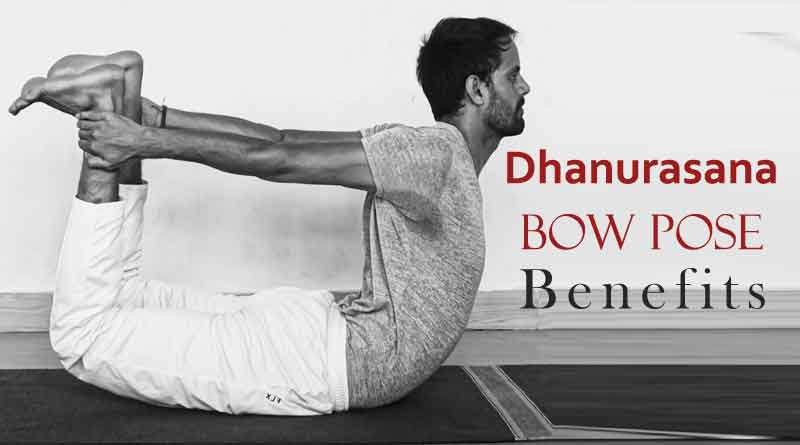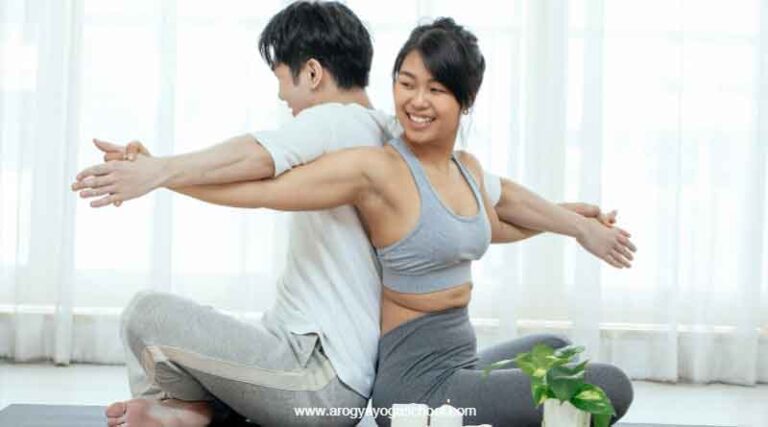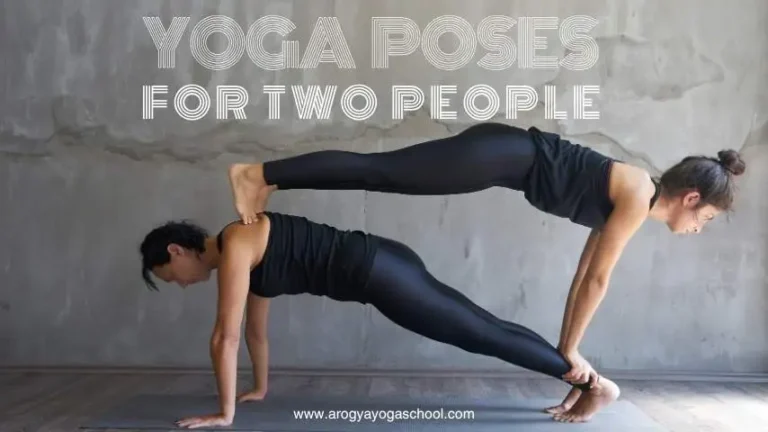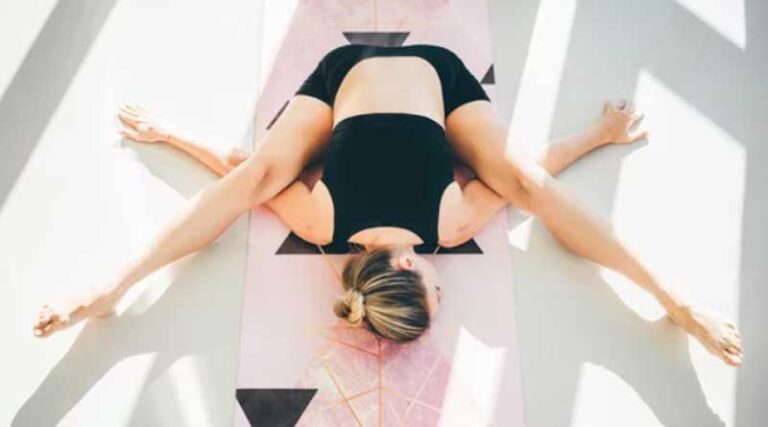
Bow Pose is known as Dhanurasanain Sanskrit. It is a word that means “Dhanu,” which means bow, and “asana,” means posture. The yoga posture resembles the bow pulling back.
It’s beautiful to look at and offers many benefits to both your physical and mental. No matter if you’re an experienced or novice, Dhanurasana can improve your yoga practice and boost your overall well-being.
Dhanurasana, or bow posture, is a great way to lose weight. It’s a fundamental pose that is part of Hatha yoga. In this posture, the body forms bows. That’s why it’s known as Dhanurasana, as in Sanskrit. It aids in burning belly fat rapidly.
It helps strengthen thighs, ankles as well as groins, chest, abdominal organs as well as spinal cord. Dhanu refers to a bow. The bow position is a great stretch for the abdomen, spine and hip flexors, as well as pecs and biceps. It’s an excellent backbend that opens the entire body.
In this post, we will look at the benefits of this pose as well as how to execute it properly, the most frequent mistakes to avoid, simple modifications for those who are new to yoga and its significance in yoga.
It is pronounced as only aah suh na
Bow Pose is known by the name of “Dha-nur-aah-suh-na” in English.
How to say it
- “Dha” – Dha”dha” sounds like “duh” but with a soft “dh” sound.
- Nur is a rhyme with “fur.”
- Ah – just like when you’re opening your mouth while visiting the dentist
- Suh – like “suh” in “sun”
- Na – similar to “na” in “nature”
- So, Dhanurasana = Dha-nur-aah-suh-na
Bow Pose Benefits – Dhanurasana Benefits
The bow pose is not only a stretch in the basic sense; it’s a robust backbend that opens the chest, improves spinal muscles, as well as improves overall energy levels throughout your body. Here are a few of the main advantages:
- Improves Spine Flexibility and Strength– Dhanurasana is a stretch that strengthens and stretches your spine and makes it more flexible with time. It’s great for correcting an unnatural posture and relieving stiffness caused by sitting for too long.
- Opens the Chest and Shoulders– This exercise can help stretch shoulders and chest which relieves tension and improves posture. It may help ease tension caused by leaning on phones and computers.
- Aids Digestion– Bow pose yoga can stimulate the abdominal organs and could result in improved digestion. The pressure placed on your belly could help ease issues like constipation and slow digestion.
- Strengthens Core and Legs– Bow posture yoga strengthens your abdominal muscles and helps strengthen your hamstrings and thighs. It is a full-body exercise that stretches muscles in all major groups.
- Enhances Blood Flow– Dhanurasana increases circulation, allowing oxygen and nutrients to get to every area within your body. This boosts energy and decreases fatigue.
- Reduces Stress and Anxiety– The chest opening aspect of this pose can help let go of negative emotions and ease anxiety. Doing dhanurasana yoga can help you feel more light and energetic.
- Supports Back Health– by stretching, flexing and stretching the spine, Bow Pose is effective in relieving back pain, particularly when it’s due to poor posture or a lack of movement.
- Bow Pose is beneficial for the treatment of diabetes: Bow Pose (Dhanurasana) can aid people who have diabetes by increasing the pancreas and increasing insulin production, which helps regulate glucose levels in the blood. The pose also massages the stomach organs and improves digestion and metabolism. Both are essential for those suffering from diabetes. Engaging in Bow Pose regularly improves blood flow, reduces stress and assists in keeping hormones in balance. Stress reduction is particularly beneficial in managing blood sugar.
- Furthermore, this posture helps strengthen the core and back and encourages physical activity vital in diabetes treatment. However, people with extreme injuries to the back hernias or heart problems should stay clear of this pose or consult with a physician prior to trying the pose. Including Bow Pose in a well-rounded routine of yoga can be an effective method to combat diabetes successfully.
How To Do Bow Pose (Step-by-Step Guide)
If you’re interested in trying this energetic pose, follow these simple steps. Be patient and notice the way your body is feeling.
- Lie on Your Belly: You can lie on your back with your legs in front of you and your arms at your sides. Your forehead should be placed gently onto the mat.
- Bend Your Legs: Relax your knees, bend them gently, and bring your heels towards the lower part of the body.
- Grab Your Ankles: Use your arms, hold your ankles, and keep your knees approximately an inch apart. Do not grab your toes in order in order to prevent straining your feet.
- Lift Your Upper Body and Thighs: When you breathe the air, raise your thighs and chest away from your mat. Your body should appear like the bow your arms forming strings.
- Look Ahead: Keep your eyes focused toward the sky or up slightly to allow your chest to expand and ensure your neck is comfortable. Don’t tilt your neck too much.
- Stay in the Pose: Keep this posture for about 15 minutes (or longer If you feel relaxed) and breathe deeply throughout the duration. Focus on stretching and remaining calm.
- Come Down Slowly: After exhaling then let go of your ankles. Slowly lower your thighs and chest back onto the mat. Please take a few moments to rest before continuing or trying it again.
Bow Pose Common Mistakes To Avoid
Bow Pose may appear easy; however, if you rush or do not focus on your posture, errors can occur. Here are a few things to consider to ensure a safe practice
- Holding Your Breath: It’s not uncommon for people to not breathe during this pose. Deep breaths help to relax your muscles and increase the flow of oxygen throughout your body.
- Overarching the Lower Back: Do not put too much pressure on your lower back. Involve those muscles in your back and distribute the stretch evenly across your spine. If you experience discomfort within your back area, this means your spine isn’t aligned properly.
- Knees Too Wide Apart: Keep your knees at hip-width apart during the posture. The spread of your knees reduces the effectiveness of the stretch and increases the risk of injury.
- Gripping Toes Instead of Ankles: The weight of your toes could create stress on the joints of your feet. Make sure to grab your ankles, shins, or your shins for greater balance and control.
- Forcing the Stretch: Do not force yourself too much into the position. Injuring yourself by overstretching could be the cause. Be patient as you ease into your posture and pay attention to your body’s limitations.
Bow Pose Variations and Modifications for Beginners
If you’re not familiar with Bow Pose or find it difficult, don’t fret. Here are some more straightforward ways to build endurance and flexibility with time:
- Use a Strap: If you are unable to grasp your ankles with ease, you can try using the strap of yoga. Place it on your ankles and secure the strap with your hands to assist you in not straining.
- Keep Your Thighs Lower: Do not lift them far above the floor; focus on raising your chest while maintaining your thighs close on the mat. This will reduce the force of the stretch while aiding your chest and spine.
- Try One Side at a Time: To make it more gentle, try Half-Bow Pose (Ardha Dhanurasana) by lifting one leg at a time. Make sure the other leg is in a straight position on the mat for support, and then switch sides to ensure stability.
- Skip the Lift: If you feel that lifting is too difficult, put your body in a stomach position, rest your ankles and concentrate on breathing deeply. Simply lying down will help you open your shoulders and chest.
The Significance of Bow Pose in Yoga Practice
Yoga pose dhanurasana, or seated pose, is not only a fitness routine; it has a place in yoga. It symbolizes the power of focus, strength and harmony. The bow’s shape signifies that you are prepared, focused and able to channel your energy efficiently.
- Mind-Body Connection: This posture promotes mindfulness by making you aware of and focus on your breathing. It is a way to remind yourself to be mindful and not move vigorously.
- Heart-Opening Benefits: A lot of yoga poses are designed to awaken your heart chakra (Anahata), which is connected to compassion, love, and balance. Bow Pose is important for stimulating this chakra.
- Encourages Energy Flow: By extending the front part of your body and energizing your spine, the Bow Pose assists in clearing energy pathways (called Nadis) in the yoga the philosophy of yoga. This results in increased energy and a sense of well-being.
Tips for Safe Practice
- Warm Up First: Always start with a few stretching or warming poses, such as Cat-Cow or Cobra, to prepare your body for back bending.
- Avoid Pain: Gentle stretching is acceptable; however, painful pain isn’t. If you are feeling uncomfortable then ease yourself out of the posture immediately.
- Practice on a Comfortable Surface: Utilize a yoga mat with cushioning to safeguard your abdomen and knees from pain.
- Seek Guidance: If you’re not sure about your technique, think about seeking out a yoga instructor for help.
The Bow Pose (Dhanurasana Pose) Final Thoughts
A yoga practice that requires both feet to be placed on your stomach. It’s known as the Bow Poseand. In Sanskrit, it’s called Dhanurasana.
The Bow Pose (dhanurasana position) is a vital yoga posture that balances strength flexibility, strength, and a sense of mindfulness. It may not be easy initially, but after a few sessions, it can become an essential element of your yoga routine. It improves your core and back. It also assists in clearing your mind by decreasing stress and increasing concentration.
Keep in mind that yoga isn’t about perfect, but rather, it’s about making improvements. Be aware of where you are now and discover this wonderful posture. Dhanurasana helps you to improve your practice or stretch and let your body relax. It makes you feel refreshed and rejuvenated.
If you’d like to learn the details regarding Bow Pose, including its advantages and step-by-step directions to follow, join Yoga TTC located in Rishikesh.
For More Yoga Videos, Click Here





